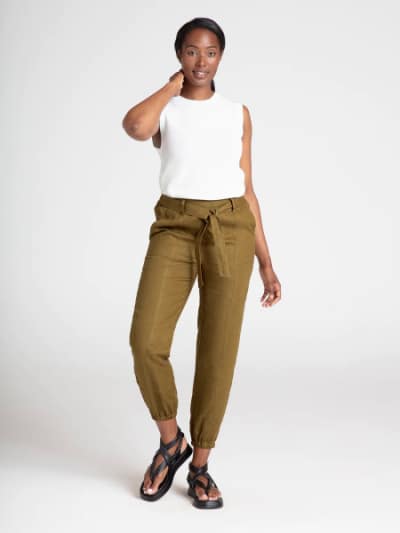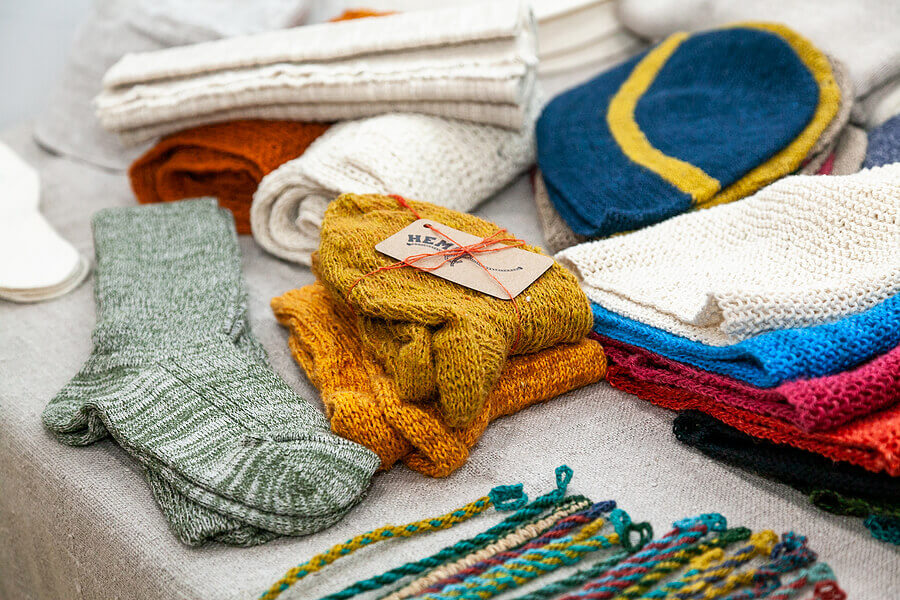Recommended News On Choosing Bamboo Clothing
Wiki Article
What Are The Advantages Of Hemp Clothing Made From Low-Impact Fibres? Clothing For The Environment?
The hemp clothing made of low-impact fiber provides numerous environmental benefits when compared to clothing made from other materials, notably synthetic fibers and conventional cotton. Hemp clothing comes with a variety of environmental advantages. It grows quickly and requires minimal water, pesticides, or herbicides in comparison to other crops. Hemp is able to thrive in all conditions and soil types. It also reduces the need of chemicals used in agriculture.
Hemp is known to require less water than cotton. Cotton, on the other hand is known for its high water consumption. Hemp clothing is more water-efficient due to this.
Hemp is usually grown without using synthetic pesticides. Pesticides are not necessary. This can help reduce the environmental impacts that come from chemical farming.
Hemp cultivation can enhance soil quality thanks to its deep-rooted roots system that assists in preventing erosion and compaction of soil. It also leaves the soil in better condition to allow for future crops.
Biodegradability- Hemp fibers are biodegradable, and break down naturally over time, decreasing the environmental impact of textile waste. In contrast, synthetic fibers like polyester take hundreds of years to break down.
Lower Carbon Footprint- The production of hemp fibers generally has a lower carbon footprint compared to synthetic materials. Additionally, hemp can capture carbon dioxide from the atmosphere as it grows, acting as a carbon sink.
Hemp clothing can last for many years. Good quality hemp clothes will last for a long time. This means that you won't have to replace them often and also reduce the amount of waste.
Hemp plants naturally repel many bugs. They do not require pesticides to control their infestation.
Hemp is a versatile material that can be used for bags, clothing or other accessories.
Regenerative agriculture- Certain sustainable farming methods integrate hemp into regenerative agricultural systems which aim at restoring and enhancing ecosystems, while also producing plants. This approach could have positive environmental effects.
The process of dyeing, the transportation as well as consumer behavior all play a role in the overall sustainability. Similar to any other business, there will be variations in production methods and guidelines. Therefore, it is important to search for organic hemp clothing or certified hemp clothing. This will ensure the most environmental benefit. Take a look at the recommended get the facts on hemp clothes for site recommendations including patagonia double knee pants, dash hemp clothing, hemp fabric, hemp trousers, hemp baja hoodie, patagonia island hemp pants, nomad hemp wear, hemp mens jeans, hemp shirts mens, hemp cotton fabric and more.

How Is Hemp Clothing Functionally And Technicalily More Efficient Than Traditional Fibres?
Hemp clothing has a variety of benefits in terms of technical and functional over other fibers, while being environmentally friendly. Hemp clothing offers several advantages that make it an excellent eco-friendly and high-performance choice.
Hemp fibres are extremely breathable. They also wick away water, making hemp clothing very comfortable under all kinds of conditions. They help to wick away moisture, keeping the wearer cool and dry during the hot summer months.
Temperature Regulation-
Hemp clothing is known for its excellent thermoregulatory qualities. Hemp clothing will help keep you warm by capturing heat near the body, and also cool you down in hot temperatures by allowing heat and moisture to go away. This natural thermoregulation can reduce the frequency of changing clothes.
Durability and long-term durability:
Hemp is known for its toughness. Hemp clothing tends to be more durable and resistant to wear and more durable than other fibers. Hemp clothes are sturdy, which means that they are able to last longer and lessen the need for replacements, and, consequently, their impact on the environment.
UV Protection
Hemp fibers protect skin from UV radiation by providing the skin with UV protection. This is particularly beneficial in outdoor activities.
Biodegradability:
Hemp clothing breaks down as time passes. This feature helps in reducing the impact on the environment of textile trash. Synthetic fibers may remain in landfills for long durations.
Low Environmental Impact
Hemp cultivation is less dependent on synthetic pesticides as compared to cotton. It uses less of the precious resource water. This makes it a more eco-friendly option. The organic hemp farming process further improves the environmental benefits.
Carbon Sequestration
Hemp plants can absorb carbon dioxide throughout their growth. The hemp plant is able to act as a carbon sink, and also reduce greenhouse gases.
Sustainable agriculture and crop rotation-
Hemp can be incorporated into crop rotation systems, improving overall soil health while reducing the possibility of soil depletion and buildup of diseases. The environmental benefits of hemp are improved by this sustainable farming technique.
Versatility:
In order to create blends of fabric that are eco-friendly and high-performance hemp fibers may be blended with other fabrics such as organic cotton and recycled Polyester. This flexibility makes it possible to develop innovative and sustainable textiles.
Low Toxicity
Hemp fibers are non-toxic by nature and don't require any chemical processing during the manufacturing process, reduce the impact on the environment.
While hemp offers many eco-friendly and practical advantages however, the sustainability of clothing is affected by other factors like the process of dyeing and transportation. Additionally, it is impacted by ethical working practices. Customers who wish to make eco-friendly choices should choose clothing brands which use hemp or other sustainable fibres and prioritize transparency and ethical manufacturing. Take a look at the top rated go here on hemp clothes for website recommendations including patagonia hemp vest, hemp apparel fabric, hemp fabric clothing, hemp apparel fabric, hemp swimsuit, wholesale hemp fabric, hemp shorts mens, wholesale hemp fabric, hemp shirts, patagonia iron forge jacket and more.

What Are The Advantages Of Wearing Bamboo Clothing For Comfort And The Environment.
Bamboo clothing has many advantages for comfort as well as the environment.
Bamboo fabric is renowned for its softness. It is a silky velvety texture that is comfortable to wear. Bamboo clothing has a extremely soft and luxurious texture, which makes it popular as intimate apparel as well as activewear and loungewear.
Breathability- Bamboo fibers are naturally breathable and wick moisture away. Micro-gaps facilitate air circulation, which helps keep you cool in hot weather. The moisture-wicking properties help remove sweat from your body, reducing dampness.
Bamboo clothing is a great option to regulate temperature. Bamboo clothing can help keep you warm in cooler temperatures, by trapping warmth close to your body. It also allows you to remain cool during hot temperatures because it lets excessive heat and moisture to escape. Bamboo clothing is appropriate to wear all the time because it is adaptable to different temperatures.
Bamboo fabric is hypoallergenic. It is naturally hypoallergenic and gentle for skin that is sensitive. Bamboo fabric is more likely than other materials to cause allergic reactions or irritations so it's a good choice for people with sensitive skin or allergies.
Odor resistance Bamboo fibers are naturally antimicrobial properties that help in preventing the growth of bacteria that cause odor. This helps to maintain the freshness and freshness of bamboo clothing, even during physical activities.
Environment-
Sustainability- bamboo is a resource that is highly renewable and sustainable. Bamboo is among the fastest growing species on the planet. It requires little water and doesn't require pesticides or herbicides to grow. Bamboo can grow from the roots, which makes it possible to harvest the plant without damaging the plant.
Low Water Usage- Bamboo is inherently water-efficient. It can be grown without irrigation, and is typically grown with rainwater only. This minimizes the negative environmental impact of water consumption in agriculture.
Biodegradability Bamboo clothing naturally decomposes when it is removed. This property decreases the accumulation in the landfills of non-biodegradable materials.
Carbon Sequestration. Bamboo plants can absorb carbon dioxide from the atmosphere when they expand rapidly. As a result, bamboo cultivation could act as a carbon sink, assisting to mitigate climate changes by reducing greenhouse gas emissions.
Chemical Reduction. The production of bamboo fabric typically requires less chemical treatment and processing than other types of textiles. Therefore, the industry of textiles has less environmental impact.
Closed-Loop Processes- Some bamboo fabric manufacturing processes are closed-loop, which recycles water and chemical waste and reduces pollution and waste.
It is important to keep in mind that the environmental impact of a garment can differ based on the process of manufacturing, and whether or not the bamboo used for manufacturing was sourced from ethically and sustainably managed bamboo forests. If you're looking to reap the greatest environmental benefits out of bamboo clothing, look for sustainable and ethical manufacturing practices. Take a look at the top rated these details for bamboo clothing for more tips including t shirts bamboo, bamboo cay christmas shirts, clothes made from bamboo, bamboo long sleeve shirt, bamboo shorts, bamboo undergarments, bamboo t shirts womens, bamboo twirl dress, angel dear bamboo pajamas, bamboo terry fabric and more.
